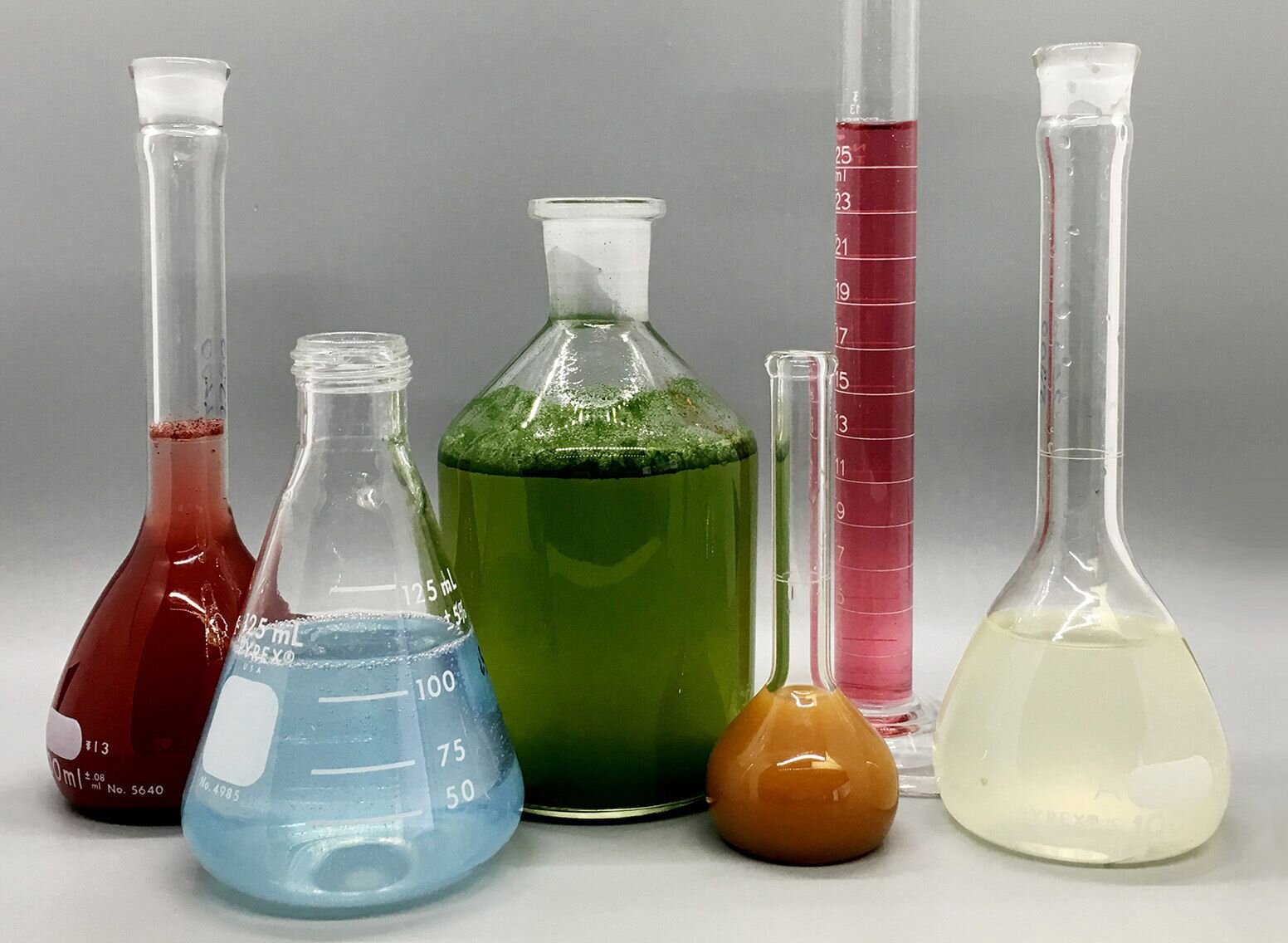Excitement About Uv/vis
Excitement About Uv/vis
Blog Article
Little Known Facts About Circularly Polarized Luminescence.
Table of ContentsThe Definitive Guide for Uv/visGetting My Circular Dichroism To WorkAn Unbiased View of SpectrophotometersExcitement About Uv/visThe Buzz on SpectrophotometersWhat Does Circularly Polarized Luminescence Do?The smart Trick of Circularly Polarized Luminescence That Nobody is DiscussingThe Greatest Guide To Circularly Polarized LuminescenceThe Only Guide to Circular DichroismThe 2-Minute Rule for Uv/visLittle Known Facts About Circular Dichroism.Circular Dichroism Can Be Fun For EveryoneAll about Circular Dichroism
It is then scanned through the sample and the reference services. Fractions of the incident wavelengths are transmitted through, or reflected from, the sample and the reference. The resultant light strikes the photodetector gadget, which compares the relative intensity of the 2 beams. Electronic circuits transform the relative currents into direct transmission portions and/or absorbance/concentration worths.The transmission of a reference substance is set as a standard (datum) value, so the transmission of all other substances are tape-recorded relative to the initial "zeroed" compound. The spectrophotometer then transforms the transmission ratio into 'absorbency', the concentration of particular parts of the test sample relative to the initial compound.
Since samples in these applications are not easily available in big quantities, they are specifically fit to being evaluated in this non-destructive technique. In addition, valuable sample can be conserved by using a micro-volume platform where as little as 1u, L of sample is required for total analyses. A short explanation of the procedure of spectrophotometry includes comparing the absorbency of a blank sample that does not contain a colored substance to a sample that consists of a colored compound.
The Facts About Uv/vis Revealed
In biochemical experiments, a chemical and/or physical residential or commercial property is selected and the treatment that is used is particular to that property in order to obtain more info about the sample, such as the quantity, pureness, enzyme activity, etc. Spectrophotometry can be utilized for a number of methods such as identifying optimal wavelength absorbance of samples, identifying optimal p, H for absorbance of samples, figuring out concentrations of unknown samples, and determining the p, Ka of different samples.: 21119 Spectrophotometry is also a useful procedure for protein purification and can likewise be utilized as an approach to develop optical assays of a substance.
It is possible to understand the concentrations of a two element mix using the absorption spectra of the basic solutions of each element. To do this, it is necessary to understand the termination coefficient of this mixture at two wave lengths and the termination coefficients of solutions which contain the recognized weights of the two elements.

The Buzz on Uv/vis
The majority of spectrophotometers are used in the UV and noticeable areas of the spectrum, and some of these instruments likewise run into the near-infrared Region. The concentration of a protein can be estimated by determining the OD at 280 nm due to the presence of tryptophan, tyrosine and phenylalanine (https://www.giantbomb.com/profile/olisclarity1/).
Nucleic acid contamination can also interfere. This method needs a spectrophotometer efficient in measuring in the UV region with quartz cuvettes.: 135 Ultraviolet-visible (UV-vis) spectroscopy involves energy levels that delight electronic shifts. Absorption of UV-vis light thrills molecules that are in ground-states to their excited-states. Noticeable region 400700 nm spectrophotometry is used extensively in colorimetry science.
20. 8 O.D. Ink makers, printing business, textiles vendors, and much more, need the data provided through colorimetry. They take readings in the region of every 520 nanometers along the noticeable region, and produce a spectral reflectance curve or an information stream for alternative discussions. These curves can be utilized to test a new batch of colorant to examine if it makes a match to specifications, e.
Little Known Facts About Circularly Polarized Luminescence.
Standard visible region spectrophotometers can not spot if a colorant or the base material has fluorescence. This can make it difficult to handle color problems if for example one or more of the printing inks is fluorescent. Where a colorant consists of fluorescence, a bi-spectral fluorescent spectrophotometer is utilized (https://pblc.me/pub/3fc0b3e264b77b). There are two major setups for visual spectrum spectrophotometers, d/8 (spherical) and 0/45.
Researchers utilize this instrument to measure the amount of substances in a sample. If the substance is more focused more light will be absorbed by the sample; within small varieties, the Beer, Lambert law holds and the absorbance in between samples differ with concentration linearly. When it comes to printing measurements two alternative settings are commonly utilized- without/with uv filter to manage better the result of uv brighteners within the paper stock.
The Single Strategy To Use For Circularly Polarized Luminescence
Some applications need little volume measurements which can be carried out with micro-volume platforms. As explained in the applications area, spectrophotometry can be Clicking Here used in both qualitative and quantitative analysis of DNA, RNA, and proteins. Qualitative analysis can be used and spectrophotometers are used to tape spectra of substances by scanning broad wavelength regions to figure out the absorbance residential or commercial properties (the strength of the color) of the substance at each wavelength.

What Does Circularly Polarized Luminescence Do?
One major element is the type of photosensors that are available for various spectral areas, however infrared measurement is also difficult since practically whatever gives off IR as thermal radiation, specifically at wavelengths beyond about 5 m. Another issue is that numerous products such as glass and plastic absorb infrared, making it incompatible as an optical medium.
Samples for IR spectrophotometry may be smeared in between two discs of potassium bromide or ground with potassium bromide and pushed into a pellet. Where liquid solutions are to be measured, insoluble silver chloride is utilized to construct the cell. Spectroradiometers, which run almost like the noticeable area spectrophotometers, are created to measure the spectral density of illuminants. Obtained Dec 23, 2018. Basic Lab Techniques for Biochemistry and Biotechnology (Second ed.). The necessary guide to analytical chemistry.
Oke, J. B.; Gunn, J. E.
Some Known Details About Circularly Polarized Luminescence

1021/ac50048a728. ISSN0003-2700. Ninfa AJ, Ballou DP, Benore M (2015 ). Essential Lab Approaches for Biochemistry and Biotechnology (3, rev. ed.). Hoboken, NJ: Wiley & Sons. p. 77. ISBN9780470924525. OCLC915641828. "Fully Automatic Double Beam - Atomic Absorption Spectrophotometer (AA 8000)". Lab Devices. Labindia Analytical Instruments Pvt. Ltd. "Spectrophotometry Applications and Principles".
An Unbiased View of Uv/vis
Retrieved Jul 4, 2018. Trumbo, Toni A.; Schultz, Emeric; Borland, Michael G.; Pugh, Michael Eugene (April 27, 2013). "Applied Spectrophotometry: Analysis of a Biochemical Mixture". Biochemistry and Molecular Biology Education. 41 (4 ): 24250. doi:10. 1002/bmb. 20694. PMID 23625877. (PDF). www. mt.com. Mettler-Toledo AG, Analytical. 2016. Retrieved Dec 23, 2018. Cortez, C.; Szepaniuk, A.; Gomes da Silva, L.
"Checking Out Proteins Filtration Techniques Animations as Tools for the Biochemistry Teaching". Journal of Biochemistry Education. 8 (2 ): 12. doi:. Garrett RH, Grisham CM (2013 ). Biochemistry. Belmont, CA: Cengage. p. 106. ISBN 978-1133106296. OCLC 801650341. Holiday, Ensor Roslyn (May 27, 1936). "Spectrophotometry of proteins". Biochemical Journal. 30 (10 ): 17951803. doi:10. 1042/bj0301795.
PMID 16746224. Hermannsson, Ptur G.; Vannahme, Christoph; Smith, Cameron L. C.; Srensen, Kristian T.; Kristensen, Anders (2015 ). "Refractive index dispersion noticing using a range of photonic crystal resonant reflectors". Applied Physics Letters. 107 (6 ): 061101. Bibcode:2015 Ap, Ph, L. 107f1101H. doi:10. 1063/1. 4928548. S2CID 62897708. Mavrodineanu R, Schultz JI, Menis O, eds.
The 3-Minute Rule for Uv/vis/nir
U.S. Department of Commerce National Bureau of Standards unique publication; 378. Washington, D.C.: U.S. National Bureau of Standards.
The procedure begins with a controlled light source that illuminates the examined sample. When it comes to reflection, as this light engages with the sample, some is taken in or produced. The discharged light journeys to the detector, which is evaluated, measured, and provided as industry-standard color scales and indices.
All terms are evaluated over the noticeable spectrum from 400 to 700 nm. In the case of transmission, when the light interacts with the sample, it is either soaked up, reflected, or sent.
Spectrophotometers Fundamentals Explained
Examples consist of APHA (American Public Health Association) for watercolor and purity analysis, ASTM D1500 for petrochemical color analysis, edible oil indices used in food, and color analyses of drinks. The simplified math looks like this:. Where T is the transmission coefficient. All terms are evaluated over the noticeable spectrum from 400 to 700 nm.
Image Credit: Matej Kastelic/ Dr. Arnold J. Beckman and his associates at the National Technologies Laboratories initially invented the spectrophotometer in 1940. In 1935 Beckman founded the business, and the discovery of the spectrophotometer was their most ground-breaking development.
Uv/vis/nir - Questions
99% precision. Gradually, researchers kept enhancing the spectrophotometer style to enhance its performance. For instance, the UV capabilities of the design B spectrophotometer were enhanced by changing the glass prism with a quartz prism. Eventually, the Model DU was produced, consisting of a hydrogen light and other improvements. This instrument was used in industrial labs, centers, and chemistry and biochemistry departments.
After 1984, double-beam versions of the device were developed. The addition of external software with the arrangement of onscreen display screens of the spectra was available in the 1990s. Typically, a spectrophotometer is made up of 2 instruments, specifically, a spectrometer and a photometer. A basic spectrophotometer contains a light, a monochromator, a collimator for straight light beam transmission, a cuvette to place a sample, and a photoelectric detector.
More About Uv/vis/nir
There are different kinds of spectrophotometers in different sizes and shapes, each with its own purpose or performance. A spectrophotometer figures out just how much light is shown by chemical elements. spectrophotometers. It determines the distinction in light strength based upon the overall amount of light introduced to a sample and the amount of light beam that goes through the sample option
As per the instrument's style, the sample is placed in between the spectrometer and the photometer. After the light is gone through the sample, the photometer measures its intensity and displays the reading. A spectrophotometer is used to determine the concentration of both colorless and colored solutes in an option. This instrument is utilized to identify the rate of a reaction.
Report this page